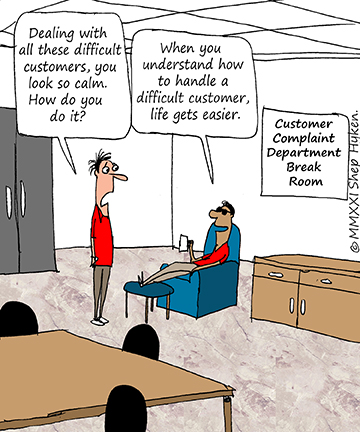Not long ago I covered six ways to handle angry customers. Often an angry customer and a difficult customer are the same. But that’s not always true. Sometimes difficult customers aren’t angry. They are just tough and demanding. That said, the techniques I cover in both of these posts can work, with a little tweak or variation depending on the situation. So, after you read this, I urge you to go back and read the original article. This is a follow-up with another half dozen techniques to manage angry and/or difficult customers.

So, here are six ways to handle difficult customers:
- Avoid acting indifferent toward your customer. Customers want your attention, and they want to feel as if the relationship you have with them is important. Indifference is apathy. That will never make a customer happy.
- Ask the right questions. These are the appropriate questions that give you the answers to understand the situation. But, be careful about interrupting with questions. That can frustrate the customer. There may be a time you need to interrupt, but just go about it the right way. Cutting the customer off could end up escalating the anger or problem, when it’s your intention to do the opposite.
- Empathize! This has become a very popular word. Customers want you to empathize and understand their situation. The old expression about putting yourself in the customer’s shoes comes to mind. Saying something like, “I know how you feel. I would feel the same way if that happened to me,” could help customers know you’re on their side.
- Don’t tell the customer he or she is wrong. This isn’t about who is right or who is wrong. This is about getting the customer to say, “Thanks for taking great care of me.” You’re not going to get there if you’re accusing the customer of being wrong. Remember one of my favorite sayings: The customer is not always right! But when they are wrong, let them be wrong with dignity and respect.
- Don’t blame others inside your company. Never make anyone in your organization look bad. When a problem comes your way, you own it, regardless of who is at fault.
- Focus on a positive outcome. Instead of focusing on what you can’t do, focus on what you can do. Customers want to know they are talking to someone who can solve their problems.
So, there are six more tips on how to handle difficult and angry customers. In any given situation, one or more of these tactics may come in handy. Remember, you’re trying to get the customer to come back. As you interact with them, ask yourself, “Is what I’m doing right now going to make my customer come back the next time they need what we sell?”
Related: 6 Ways to Handle Angry Customers


